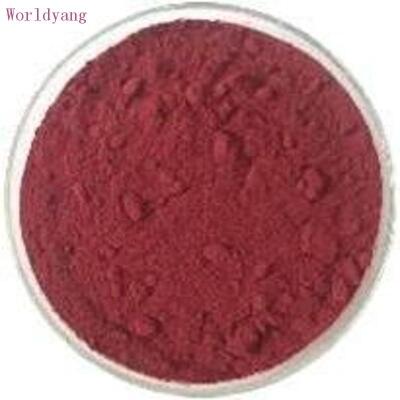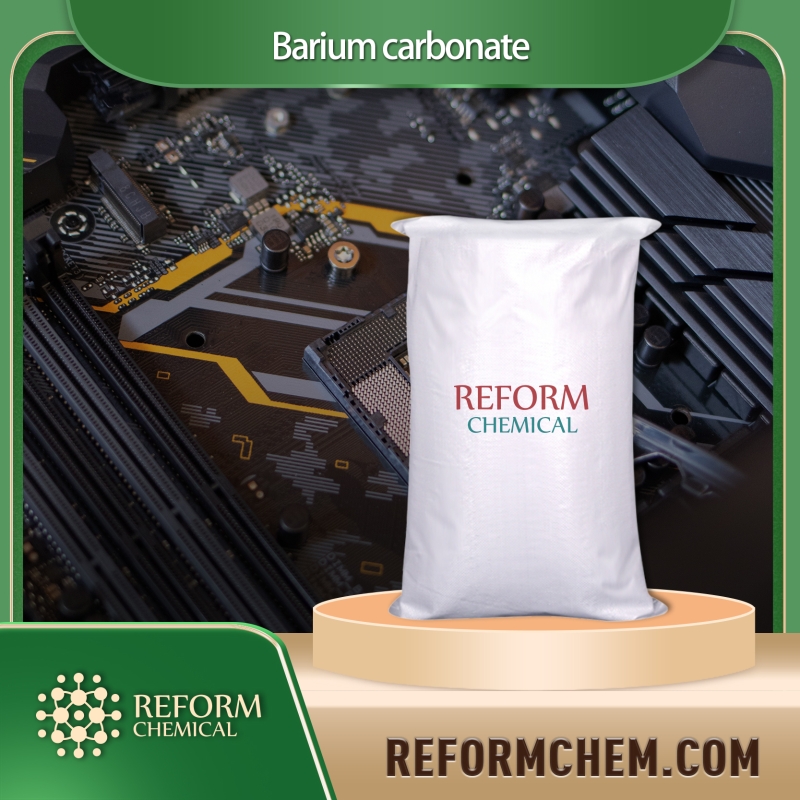-
Categories
-
Pharmaceutical Intermediates
-
Active Pharmaceutical Ingredients
-
Food Additives
- Industrial Coatings
- Agrochemicals
- Dyes and Pigments
- Surfactant
- Flavors and Fragrances
- Chemical Reagents
- Catalyst and Auxiliary
- Natural Products
- Inorganic Chemistry
-
Organic Chemistry
-
Biochemical Engineering
- Analytical Chemistry
-
Cosmetic Ingredient
- Water Treatment Chemical
-
Pharmaceutical Intermediates
Promotion
ECHEMI Mall
Wholesale
Weekly Price
Exhibition
News
-
Trade Service
Thermoplastic composite materials are currently the key industries
strongly advocated by the state because of their light weight, good impact resistance and toughness, high fatigue strength, environmental protection in the production process, recyclability and high production efficiency.
Compared with traditional thermoplastic composites, continuous fiber reinforced thermoplastic composites have better mechanical properties, and their products are widely used in aerospace, automobiles and ships, rail transit, urban infrastructure, sports and leisure and other fields
.
The design and development of new continuous fiber-reinforced thermoplastic composites is currently a research hotspot
in the composite industry.
The team led by Academician Zhongde Shan, President of Nanjing University of Aeronautics and Astronautics, conducted in-depth research
on the additive manufacturing process, mechanical properties and electrical properties of continuous glass fiber reinforced PEEK composite materials (CGFRPC).
In order to obtain high-strength composite filament, the team used high-precision X-ray 3D microscopy from Sanying Precision to non-destructively scan the composite filaments prepared at various traction speeds, characterize the morphology and microstructure of the composite filament, and study the influence
of traction speed on the morphology and mechanical properties of the composite filament during the preparation process.
The results obtained are expected to make CGFRPC's additive manufacturing technology meet the high-intensity conditions required in the aerospace and electronic equipment manufacturing fields, with an impact factor of 9.
62!
1.
Methodology
1.
1Preparation of CGFRPC filament
CGFRPC filaments
are first prepared on twin screw extrusion and impregnation equipment.
The PEEK particles are plasticized into a molten state by a twin screw extruder, then enter and fill the impregnating mold
.
At the same time, the CGF tow enters the impregnating mold with a curved flow channel under the traction action of the traction device, and is dried by the preheating device and impregnated with peek resin
.
Subsequently, CGFRPCs filaments are pulled out through the outlet die, cooled and collected
by the winding device.
In order to study the influence of traction speed on the microstructure and mechanical properties of composite filament, six kinds of composite filament
with different traction speeds were produced from 600Tex CGF.
Composite filaments were produced with a traction speed of 4.
13 mm/s using 300Tex continuous glass fiber as raw material to study the influence of
fiber size on the mechanical properties of composite specimens.
Among them, the process parameters of the prepared two sizes of CGFRPC filament filaments are shown in Table 1
.
Table 1 Preparation process parameters of 300Tex and 600Tex composite filament
1.
2 Experimental methods
, Ltd.
in China was used to perform non-destructive scanning
of composite filaments prepared at various traction speeds with a resolution of 0.
8 μm.
Then, ImageJ software was used to visually analyze the reconstructed filament data to obtain sliced images of filament, extract 3D models of fibers, fiber/resin composites and pores, and analyze slice images and 3D models to evaluate fiber volume fraction and porosity
in filament.
Sanying precision nanoVoxel-3000 microCT
2.
Results
2.
1 Mechanical properties of composite filament
).
It can be seen from the tensile stress-strain curves of filaments formed at different traction speeds in Figure 1(b) that with the decrease of traction speed, the tensile strength of filaments increases, and when the traction speed is 2.
77 mm/s, the tensile strength of filaments is the largest, and the elongation at break reaches a maximum value of 4.
39%.
Fig.
1 Mechanical properties of CGFRPCs filaments at different traction speeds: (a) tensile specimens of composite filaments (b) stress-strain curves of filaments at different traction speeds (c) tensile load (d) tensile strength and modulus The plot results in Figure 1 (c) and (d) show that the average tensile load and tensile strength of filaments increase
with the decrease of traction speed 。 For example, at a traction speed of 2.
77 mm/s, the average tensile load, tensile strength and tensile modulus of filament reach 473.
34 N, 665.
8 MPa and 23.
57 GPa
, respectively.
The tensile load and strength increase with the decrease of the traction speed, which can be interpreted as the slower traction speed is conducive to the full impregnation of the resin into the fiber and improves the interface strength
between the individual fiber and the resin.
The tensile modulus basically did not change with the change of traction speed, and although the minimum tensile load was observed at a traction speed of 7.
64 mm/s, the tensile strength did not reach the lowest value, and the tensile modulus reached a maximum of 28.
04 GPa
.
This is due to the fact that filaments have the smallest cross-sectional area and relatively high
fiber content under this parameter.
As shown in Figure 1(b), the stress-strain curve of filaments configured at 7.
64 mm/s is much steeper, indicating a relatively high
modulus.
2.
2 Composite filament profile structure
As shown in the composite filament profile of Figure 2, the roundness of the outer contour of the filament is getting better
and better as the traction speed is reduced from 11.
25 mm/s to 2.
77 mm/s.
Since higher traction speeds are not conducive to full bunching of composites at the outlet die, filaments formed at higher traction speeds often have irregular shapes, such as flat shapes
.
The outer contour of the filaments formed at lower traction speeds, although not standard round, is close to the shape
of the inner hole of the outlet mold.
, respectively.
As shown in Fig.
2 (b) and (c): Higher traction speeds tend to lead to uneven distribution
of fibers and resins.
Since the concentrated distribution of fiber and resin is not conducive to the full impregnation of resin into the fiber, which affects the mechanical properties of the filament, with the decrease of the traction speed, the distribution of the fiber between the resin tends to be uniform, and the mechanical strength of the filament gradually increases
.
As shown in Figure 2(e), filaments without pores, at low traction speeds, the pore area inside the filaments does not change
much with the change in traction speed.
Fig.
2 Profile of composite filament at pulling speed of (a) 11.
25 mm/s (b) 7.
64 mm/s (c) 6.
75 mm/s (d) 5.
4 mm/s (e) 4.
13 mm/s (f) 2.
77 mm/s
Using the ImageJ software, the physical parameters (i.
e.
, fiber volume fraction and porosity) of the composite filament at different traction speeds are calculated as shown
in Table 2.
The results show that the fiber volume fraction decreases with the decrease of the traction speed, because the slow impregnation of the fiber by the resin will lead to an increase
in the resin in the filament.
In this set of experiments, the fiber volume fraction fluctuated between 32.
19%~39.
5%, and the minimum and maximum values were correlated
with the filament pulling speed of 4.
13 mm/s and 7.
64 mm/s, respectively.
Table 2 Physical parameters of 600Tex composite fiber at different traction speeds
2.3 Three-dimensional distribution of the internal structure of composite filament
Figure 3 shows the three-dimensional distribution of fibers, fiber/resin composites and pores in the composite filament at different traction speeds, where the distribution of resin/fiber composites and pores is taken from the cuboid
intercepted inside the composite filament.
According to Figure 3(a), the higher traction speed results in an oval distribution of fibers in cross-section, and mostly curved distribution in longitudinal cross-section, resulting in some pores
inside the filament.
When the traction speed is reduced to 6.
75 mm/s (see Figure 3(b)), the distribution of fibers and resins in the filament remains uneven, and resin concentration areas and pores can also be detected, and the number of fibers in the filament in a bent state is reduced
in the longitudinal section.
Although the fiber distribution in the 7.
64 mm/s filament is better than the fiber distribution in the 11.
25 mm/s filament, there is still no guarantee of more uniform
fiber distribution for the filament with a traction speed below 7.
64 mm/s.
At a pulling speed of 4.
13 mm/s (see Figure 3(c)), the fibers are distributed in a circular cross-section and more straight in the longitudinal section, with no pores
visible inside the filament.
Fig.
3 Three-dimensional distribution (left), fiber/resin bond (middle) and porosity (right) of composite fibers at a pulling speed of (a) 11.
25 mm/s (b) 6.
75 mm/s (c) 4.
13 mm/s
4 Three-dimensional morphological characterization of pores of composite filament
To characterize the pores in the composite filament in three dimensions, the part containing the obvious pores was virtually sectioned to obtain a longitudinal profile (Figures 4(a) and (b)), and then the longitudinal profile was partially enlarged to obtain the morphology of the pores (Figure 4(c)
).
The results show that the pores in the composite filament usually appear near the fibers, and the pore distribution is discontinuous and uneven
.
It is speculated that due to the insufficient/uneven distribution of resin in the mold and the insufficient unfolding of the fiber, porosity
is prone to occur where the resin and fiber are combined.
Figure 4 (a) Longitudinal sectioning (b) Longitudinal profile (c) Pore morphology of composite filament
The bulk porosity calculated from the 3D image is shown in Table 2, where the porosity of the 7.64 mm/s filament calculated from the 2D image and the partial 3D image is 0.
25% and 0
, respectively.
The results show that the stomata are also unevenly
distributed along the radial direction of the filament.
In addition, the porosity of the 4.
13 mm/s filament calculated from the 2D image and partial 3D image is approximately zero, indicating that the resin has been well impregnated into the fiber at this time, and there are no pores
in the filament.
Table 3 Physical parameters of 600Tex composite fiber at different traction speeds
Conclusion
In this paper, a two-stage heating nozzle with preheating function is designed to promote the melting of CGFRPCs filaments and improve the mechanical properties
of the specimens.
In order to obtain high-strength composite filament, the influence
of traction speed on the microstructure and mechanical properties of composite filament filament during the preparation process was first explored with the help of three-ray three-dimensional CT of Sanying precision.
of filament.
When the traction speed is close to 2.
77 mm/s, the tensile strength of the filament reaches a maximum of 665.
8 MPa
.
Original link: style="margin: 0px; padding: 0px; outline: 0px; max-width: 100%; box-sizing: border-box !important; overflow-wrap: break-word !important; font-family: "Times New Roman", serif; text-indent: 2em; text-align: justify;">
Sanying Precision has been focusing on X-ray CT imaging technology and product development, committed to providing users with new methods and tools to solve problems, and will continue to provide more powerful assistance for researchers in the future!







